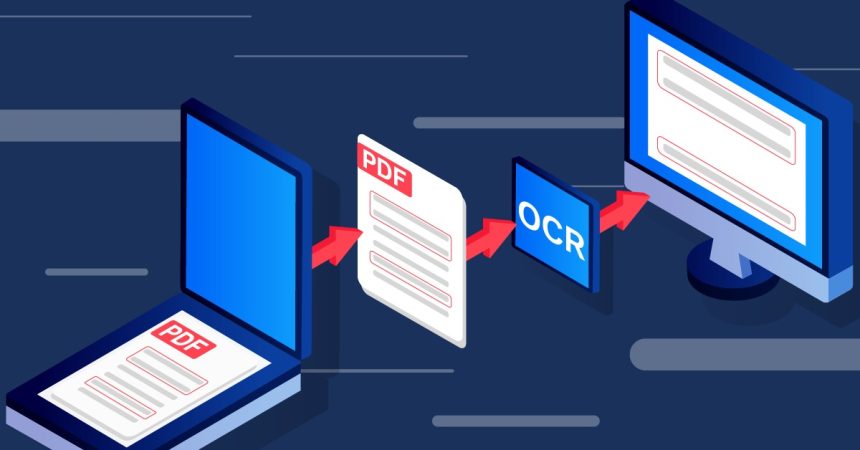In today’s digital age, the ability to convert scanned images into editable text has become an essential tool for businesses and individuals alike. Optical Character Recognition (OCR) technology plays a pivotal role in this process, allowing us to transform printed or handwritten text from images into machine-readable text. In this comprehensive guide, we will delve into the world of OCR, exploring its principles, applications, and best practices to achieve accurate and efficient conversion of scanned images into editable text.
Understanding OCR Technology
OCR, or Optical Character Recognition, is a sophisticated technology designed to recognize and extract text from scanned documents, images, or even handwritten notes. This technology relies on the analysis of individual characters and patterns, allowing it to recreate the original text digitally. OCR systems use a combination of pattern recognition, artificial intelligence, and machine learning algorithms to achieve high accuracy in text extraction.
How OCR Works
- Image Preprocessing: OCR starts with preprocessing the scanned image. This step involves tasks such as image enhancement, noise reduction, and skew correction to optimize the image for character recognition.
- Text Detection: OCR algorithms identify regions within the image that contain text. This process involves segmenting the image to locate individual characters or words.
- Character Recognition: The heart of OCR is character recognition, where the system analyzes patterns and shapes to identify letters, numbers, and symbols. Machine learning models have significantly improved OCR accuracy over the years.
- Post-processing: After recognition, post-processing techniques are applied to refine the extracted text, correct errors, and improve overall accuracy.
Applications of OCR
OCR technology has a wide range of applications across various industries. Here are some prominent use cases:
1. Document Digitization
OCR is extensively used for digitizing physical documents. It allows organizations to convert stacks of paper documents into searchable, editable digital files, streamlining document management and retrieval processes.
2. Data Extraction
In data-intensive industries like finance and healthcare, OCR is employed to extract critical information from invoices, forms, and medical records. This not only reduces manual data entry but also minimizes errors.
3. Text-to-Speech Conversion
OCR can be coupled with text-to-speech technology to make printed or handwritten text accessible to visually impaired individuals. This aids in improving accessibility and inclusivity.
4. Language Translation
OCR supports multilingual capabilities, enabling the automatic translation of scanned text into different languages. This is particularly valuable for global businesses.
Choosing the Right OCR Software
When it comes to selecting OCR software, several factors should be considered:
1. Accuracy
Accuracy is paramount. Choose OCR software with high accuracy rates, especially if you’re dealing with complex fonts, handwritten text, or low-quality scans.
2. Language Support
Ensure that the OCR software supports the languages you need. Some OCR solutions excel in specific languages, while others offer broad language support.
3. Output Formats
Consider the output formats the OCR software can generate. Ideally, it should provide editable text in formats like Word documents, plain text, or searchable PDFs.
4. Integration
For business applications, look for OCR solutions that integrate seamlessly with your existing software and workflows.
Best Practices for Successful OCR
Achieving optimal OCR results requires attention to detail. Here are some best practices to follow:
1. Quality Scanning
Begin with high-quality scans or images. Ensure good lighting, resolution, and contrast to improve recognition accuracy.
2. Clean and Straighten
Remove any noise, stains, or unwanted marks from the scanned image. Ensure the text is straight and aligned for better results.
3. Choose the Right OCR Engine
Different OCR engines have varying capabilities. Experiment with different engines to find the one that works best for your specific needs.
4. Post-processing
After OCR, proofread and edit the extracted text to correct any errors or formatting issues.
Conclusion
Optical Character Recognition technology has revolutionized the way we handle scanned images and documents, making them accessible, editable, and searchable. By understanding how OCR works, exploring its applications, and following best practices, you can harness the power of OCR to streamline your document management, data extraction, and accessibility efforts. Make informed choices when selecting OCR software to ensure accuracy and compatibility with your unique requirements. Embracing OCR technology empowers individuals and organizations to unlock the full potential of their scanned content in the digital age.


